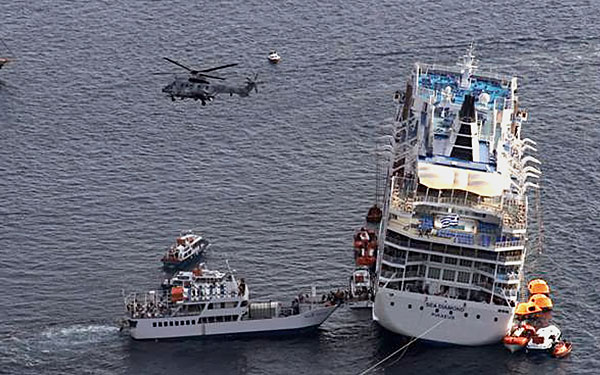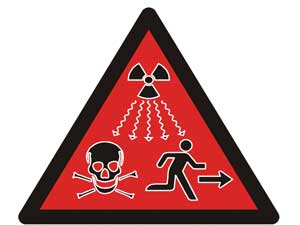Seems a reasonable question – although in my case, it commits the error which people in my line refer to as “assuming a fact not yet in evidence.” Which is to say – I didn’t know that it took so long to evacuate on ocean liner until I read this nice piece by Michelle Tsai in Slate. Turns out an ocean liner sank of the coast of Greece last week. And I think I’m so well-informed. From Tsai’s piece:
, the Sea Diamond, ran into a reef off the coast of Santorini, Greece, on April 5, tearing a hole in the hull that sank the vessel 15 hours later. The nearly 1,600 passengers and crew didn’t get off the ship for three hours. Why does an emergency evacuation take hours?
Slower evacuations are safer. According to the International Maritime Organization’s Safety of Life at Sea guidelines, the crew of a ship must be able to lower all the passengers in lifeboats within half an hour, once everyone onboard has been “mustered,” or gathered from throughout the ship. But captains don’t always evacuate that quickly, because a hasty exit can be dangerous. Panicky passengers can injure themselves as they run, shove one another, and collide in the chaos of flight. Evacuees aren’t their normal selves; one study (click for PDF) found that 70 percent of passengers are bewildered with impaired reasoning after serious maritime incidents, 15 percent exhibit irrational behaviors like uncontrollable weeping, and only 15 percent remain calm and alert.
These dangers might be acceptable in a critical emergency; for example, if a ship were quickly taking on water and about to sink. But in less dire situations, the ship’s master will tend to use all the available time to ensure a safe evacuation. Even with the Sea Diamond‘s three-hour evacuation, though, some passengers suffered broken arms. The captain might also hold up the evacuation while he or she gathers more information about what’s happening. A captain won’t abandon a vessel unless it’s sure to sink, since even a damaged ship offers more protection than a life raft.
Tsai’s done a good job of explaining a complicated problem (it’s part of a series called The Explainer; we’re given to believe that in the Bush White House, the Explainer position has been eliminated, but we’re sort of sorry they did) and has clearly done her homework.
Let me recap – and draw an inference or two:
- speed is dangerous – especially in things you’ve not practiced
- It’s hard to drill things in places where the population changes every week or two – like a cruise ship
- which might mean that – with transient populations – the setting of standards perhaps ought to be different – than, say, for evacuating an aircraft carrier full of disciplined, good-physical-shape, high level of esprit de corps types
I’m not taking the position that the SOLAS standards are inadequate. Also – despite being a big Battlestar Galactica fan – the proportion of the world population in transit on cruise ships at any given time being relatively small – I’m a bit more worried about my own neighborhood, and others like it.
For instance,
- how long does it take to evacuate a subway station with only one exit?
- why are subway emergency exits not always well-marked (answer – in part because the authorities are concerned about homeless people – in part because they’re concerned about people like me at an earlier age – well past the statutes of limitations, folks, rest assuredÂ
– who like to check out underground spaces.
- How many New York City high-rises actually do fire drills which involve actually evacuating the building – and not just all meeting at the elevator landing?

